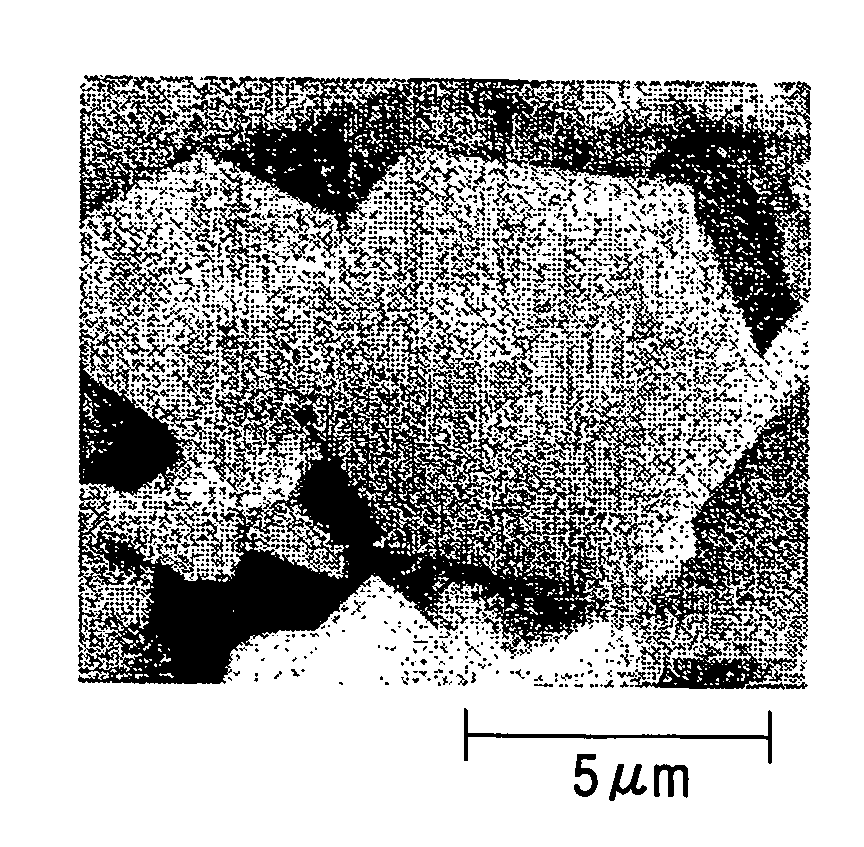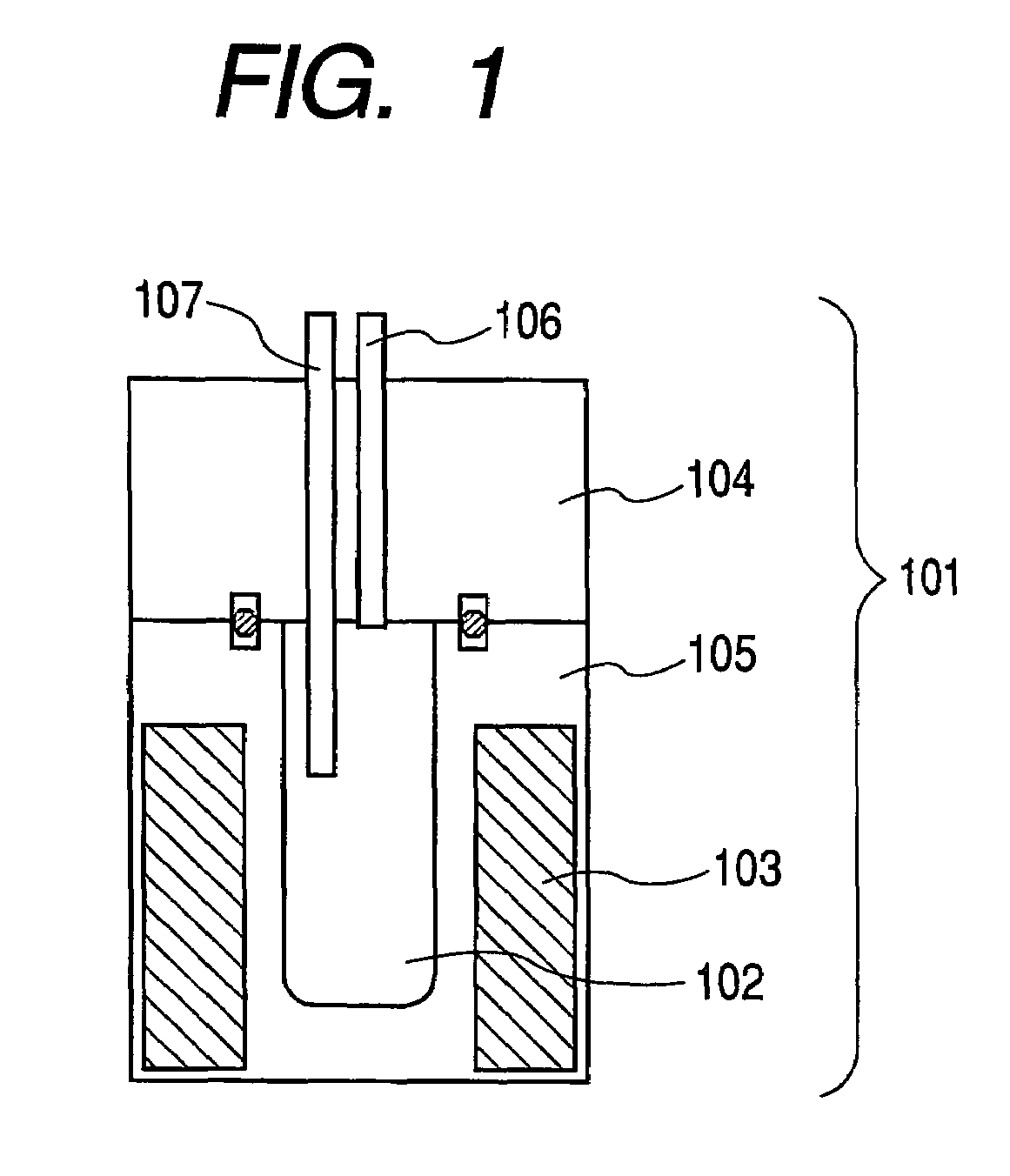Flaky carbonaceous particle and production method thereof
a carbonaceous particle and flaky technology, applied in the field of flaky carbonaceous particle production, can solve the problems of difficult methods to manufacture carbonaceous particle of high purity in large quantities at a low cost, and achieve excellent electron emission performance, excellent characteristics, and high electron conductivity
- Summary
- Abstract
- Description
- Claims
- Application Information
AI Technical Summary
Benefits of technology
Problems solved by technology
Method used
Image
Examples
example 1
[0076]In the present example, carbonaceous particles (Sample No. S-01) were produced under the production conditions shown in Table 1 with the use of the production apparatus shown in FIG. 1 and raw materials shown in the table.
[0077]The production procedure includes firstly introducing the raw materials shown in Table 1 into the reaction vessel 102 of the production apparatus shown in FIG. 1, sealing the reactor with the upper sealing member 104, then heating the inside of the reaction vessel 102 to 450° C. with a heater 103, and keeping the inside of the reaction vessel 102 at this temperature through a temperature-detecting means 107 while keeping the pressure inside the reaction vessel 102 at a predetermined pressure with the pressure controller 106. While keeping this condition, the raw materials in the reaction vessel 102 were reacted with each other for 12. At that time, the ultimate pressure in the reaction vessel was 28 MPa. After completing the reaction, the reaction vesse...
example 2
[0080]The field electron emission characteristics of the carbonaceous particle obtained in Example 1 were evaluated by using the field electron emission device shown in FIG. 5. At first, the carbonaceous particle of 0.22 g, which was obtained in Example 1 and ground with a planetary ball mill, was added to 75 ml of isopropyl alcohol, and was subjected to ultrasonic waves for six hours to obtain a homogeneous dispersion liquid. Then, electrodeposition was performed by application of a DC voltage of 100 V for five minutes, while being stirred with a magnet stirrer. Both anode and cathode used in the electrodeposition were stainless steel substrates. The electrodeposited substrate (electrode; 503a / 505) was mounted on the glass substrate 502a of the measuring device 501 in FIG. 5; then the mica plate 504, the opposing electrode (stainless steel) 503b and the glass plate 502b were stacked in the named order to make a measurement cell, which was put in the measuring device 501; and a volt...
example 3
[0084]The carbonaceous particles obtained in Example 1 were calcined in an inert gas at 2,500° C. to remove metallic component therefrom. The thus calcined carbonaceous particles were mixed with a binder and an alcohol to make a paste, and the paste was applied to a current collector made of a copper foil to prepare a negative electrode. Separately, a positive electrode was prepared by using lithium cobalt oxide. By using the negative electrode and the positive electrode, a lithium secondary battery having the configuration shown in FIG. 7 was made according to the above-described lithium secondary battery production method. As a result of evaluating the charge / discharge efficiency of the thus obtained lithium secondary battery thorough a charge / discharge cycle test, the charge / discharge efficiency at the 50th cycle was as good as 1.12, when that of a lithium second battery using graphite for a negative electrode was defined as 1.0.
[0085]Generally, at the time of electrode formation...
PUM
| Property | Measurement | Unit |
|---|---|---|
| thickness | aaaaa | aaaaa |
| side length | aaaaa | aaaaa |
| crystal lattice spacing | aaaaa | aaaaa |
Abstract
Description
Claims
Application Information
 Login to View More
Login to View More - R&D
- Intellectual Property
- Life Sciences
- Materials
- Tech Scout
- Unparalleled Data Quality
- Higher Quality Content
- 60% Fewer Hallucinations
Browse by: Latest US Patents, China's latest patents, Technical Efficacy Thesaurus, Application Domain, Technology Topic, Popular Technical Reports.
© 2025 PatSnap. All rights reserved.Legal|Privacy policy|Modern Slavery Act Transparency Statement|Sitemap|About US| Contact US: help@patsnap.com



